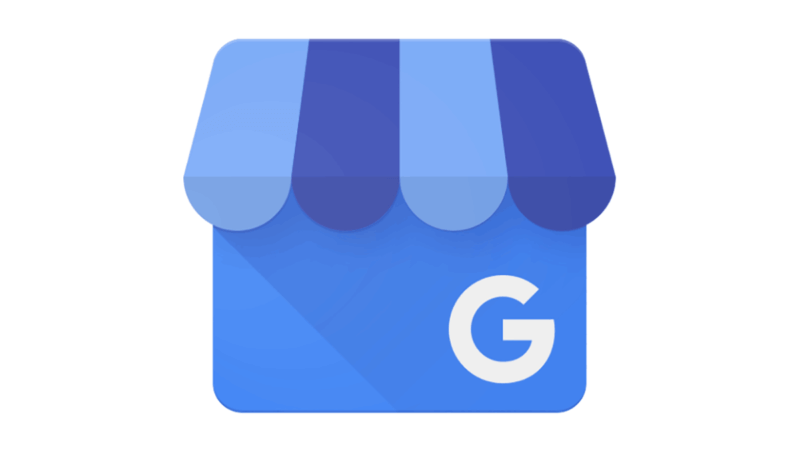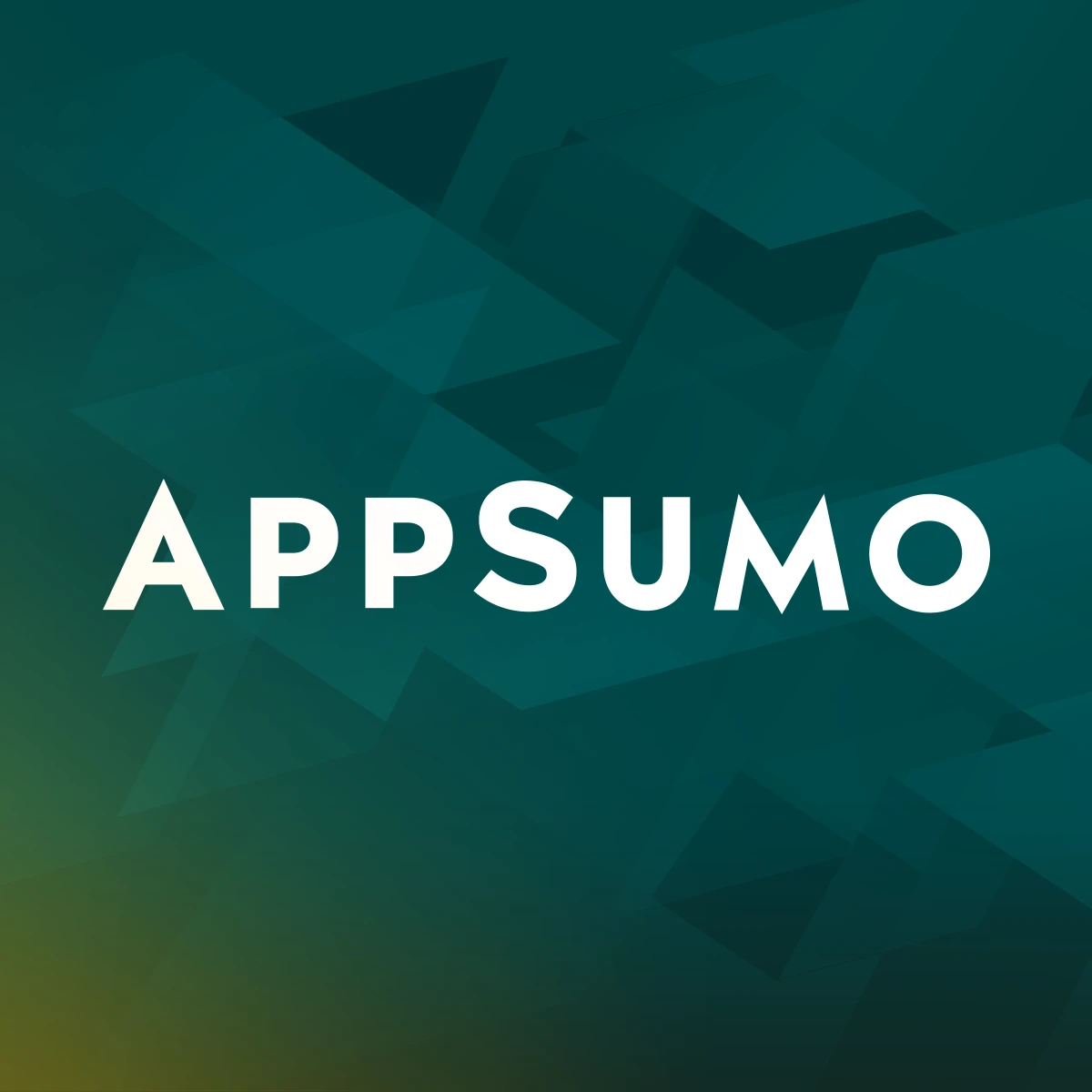I Built An Email Marketing Tool For Solopreneurs That Makes $20K/Mo
Hello! Who are you and what business did you start?
Hi everyone! I’m Marcus Biel, a Java developer turned entrepreneur. Around four years ago I started my company Maildroppa with a clear plan: to build an email marketing solution that is easy to use, yet also powerful.
I wanted it to be accessible to solo founders and bootstrappers like myself. This meant making it very affordable, which is especially important when you’re first starting out.
With this in mind, I created a free plan for 100 subscribers valid forever. This plan doesn’t just have a few features, it has access to all the features that a premium subscription would. Effectively, your email marketing only starts costing you money once your business gains traction.
Once you’ve exceeded the free plan, it’s still incredibly affordable with 1000 subscribers costing as little as $5. This means that Maildroppa’s growth is linked to the growth of our customers’ businesses.
I immediately saw that this approach was creating trust and leading to genuine partnerships. I don’t just want my customers to succeed; I need them to. It’s a tool made for bootstrappers by a bootstrapper. The benefits have been clear for Maildroppa and our customers, allowing the company to grow to the point where we recently reached $20,000 in monthly revenue.

What's your backstory and how did you come up with the idea?
I’ve been interested in computers for about as long as I can remember, and at 8 years old I decided that I was going to work for myself one day. Unfortunately, it took almost another 30 years before I realized that goal.
Between those two points in my life, I studied computer science and became a leading Java programmer. I enjoyed Java but didn’t like the lack of motivation and freedom that I saw in others who were working in a corporate environment. I saw too many people acting like robots; people who had given up on their dreams and were just doing their 9-5 job.
After about 2 years of working for a company, I would start to get bored. Part of this is my ADHD, plus I always wanted to do more and try new ideas. I was told not to overburden my colleagues, and that I should do less at work. So in 2015, I decided to start putting this extra time and energy into my own business on the side. I didn’t yet know what I wanted to do.
I started going to meetings for startups. I got to know people and I heard about Rob Walling. First I read his book, then I started listening to his podcast, and soon after I joined the Micropreneur Academy. The philosophy of the bootstrapper, the solopreneur, and the indie founder really spoke to me.
At the time, Rob was busy working on Drip. I liked the idea and could relate to it because in 2001 I had built a super simple newsletter tool for an NGO. I didn’t want to feel like I had copied his business idea though. I had also been told to build an info product like an e-book or video course before going for something as complex as SaaS (Software as a Service).
I decided to start making educational videos for Java. I spent a lot of time making these and gained over 25,000 followers on Twitter while doing so. In the Micropreneur Academy, I learned that you need to have a newsletter, so I signed up for Mailchimp to set one up. Despite my background as a developer, I found the platform overly complicated to use. And, as my followers grew, so did my email subscribers and costs.
Out of necessity, I started developing an email marketing tool to collect and send emails for my info product. My newsletter grew to about 17k subscribers and it was costing me almost nothing. It was still a super simple tool – the only thing it could do was send an email to my subscriber list – but it worked well.
My videos became quite popular on YouTube, but I couldn’t see a way to turn it into a true business. Developers can be quite bad customers and I didn’t like the idea of taking money from people just to teach them Java.
Instead, in 2019, I went into Java freelancing full-time. My info product had helped to make me well-known in the field which allowed me to find clients at good rates. However, even as a freelancer, I still didn’t feel completely free in my work. I wanted my own business. In March 2020, I decided that I had enough savings to take a few months off and work on a new business.
I still didn’t have an amazing “unicorn” idea, but what I did have was a newsletter tool that I’d already developed for myself. I just had to take it from a rudimentary tool to an effective email marketing platform.
Rob had sold Drip a long time ago, and I finally realized that I wasn't a "copycat" just for developing an email marketing SaaS as well. He wasn't the first to develop one either. There are no truly new ideas. As Sir Isaac Newton said, “We stand on the shoulders of giants.”
The fact that an email marketing tool is not an entirely new idea but one that’s tried and tested, means that it comes with the advantage of already having been validated. Email marketing is clearly something people need. I just had to find ways to be better than the competition, opportunities to differentiate myself from them, and my own customer niche.
This meant that I had to develop my little email tool into a fully functioning email marketing platform. One that was good enough to sell to other solo founders. It was never about creating the next Facebook, it was just about finding freedom through my work.
Simply release your SaaS when you think you’re ready and then see how it goes. Gradually let more people know about it when everything goes well, or make adjustments when needed.
Take us through the process of building the first version of your product.
I had already created the first version of Maildroppa for my info product but there’s a big difference between creating a product that works for you and selling it as SaaS to other founders. As I’m an experienced Java backend developer, Java was set for the backend right from the start.
After doing some research, I considered a few different options for the app like Vue, Svelte, and React. I had a friend who was a freelance Java developer. He already had experience with React and was willing to help me get started. So, I decided to use React for the front end. Initially, I taught it to myself using an excellent online course from Bob Ziroll.
As an experienced developer, this went pretty quickly for me. My friend helped me to develop the login page, and this page still exists today.

We developed the app and the backend side by side and connected them immediately. This approach allowed us to avoid writing automated tests initially, partly because the software was still quite straightforward at this early stage. As an experienced developer, adopting this somewhat unorthodox method was challenging, but in hindsight, it worked out well. Later, I made sure to implement thorough testing as soon as our timeline permitted.

The designs were provided by a Ukrainian designer, whom I was lucky to find on Upwork. Her designs are truly world-class! They’re one of the parts of Maildroppa that always gets complimented.
For our payment process, we chose Stripe, which initially presented a learning curve. Despite the availability of Stripe’s ready-to-use payment process, I decided to custom-build our payment integration directly into Maildroppa. This decision extended our development by about six weeks.
This customization was driven by my commitment to customer transparency and control. I needed to ensure that customers could always access essential information easily. Details like “Which subscription am I on?” and “How much will my plan cost each month?” needed to be clear and readily available, so customers always feel informed and in control of their choices.
Additionally, it was important to me that customers could cancel their subscriptions by themselves at any time. I don’t believe in making money through cheap tricks, like making it hard to cancel. If a customer is unhappy and wants to leave, they should be able to do so easily, without any hassle.

Furthermore, I ensured that customers could effortlessly upgrade or downgrade their plans. This functionality required clear visibility of all associated costs, such as VAT and any remaining fees, at every step. Developing this level of customization took a significant amount of time and involved a lot of custom coding. This is a feature that, to my knowledge, Stripe still doesn’t provide out of the box.

I mean I’m proud of how this turned out, but looking back, it probably wasn’t necessary for the first version of Maildroppa. We could have saved ourselves a lot of time. Time that would have been better spent on developing our actual product.
Another mistake I made during the development of the first version of Maildroppa is related to the currently very popular concept of an MVP.For an email marketing platform, this meant developing a tool that could send out huge numbers of emails at unbeatable prices.
This was an instant hit but with the wrong people. In creating a basic but incredibly affordable email marketing tool, we had inadvertently created a tool for spammers! This is an unfortunate problem with the concept of an MVP. In most cases, it means the ‘minimum value product’, not the minimum viable product as was intended.
The essence of an email marketing tool is not purely sending emails but rather online marketing, or online marketing through emails. A successful business has to find a clever way to solve an existing problem. However, my customers’ problem, or at least the customers I originally had in mind, was not sending emails. It’s difficult to get this right at the start. You have to understand your product and your target market properly first, and that takes time. That's why I’d advise you to simply focus on solving a problem and forget the idea of an MVP completely!
To stop Maildroppa from becoming a spamming tool, I had to respond quickly. The first step was to temporarily increase the prices so it was no longer financially viable for spammers to use. I also temporarily reduced the maximum possible number of subscribers from 1 million to 20,000.
It’s back up to 400,000 now, but at the time it was necessary to reduce it to make the platform less attractive to people looking to send out masses of spam emails cheaply. I also built logic into Maildroppa, today you might call it AI, that could efficiently recognize and suspend spammers. Combined, these changes solved our spam problem.
Describe the process of launching the business.
In between the first version of Maildroppa being built and the release, we added lots more marketing features. Some of these include custom fields and tags, filters, segmentation, and email automation. We did this to help position ourselves as a marketing tool, rather than just an email tool.


I released Maildroppa in February 2021. I honestly didn't put too much thought or planning into the release. I think they’re a bit overrated. Yes, if you do lots of planning and marketing beforehand, you can get a short spike in traffic on the day of the release but what good does that do long-term?
What if you make mistakes and disappoint a lot of people all at once? Then, all of your efforts might have been in vain. I prefer a silent release. Simply release your SaaS when you think you’re ready and then see how it goes. Gradually let more people know about it when everything goes well, or make adjustments when needed.
Anyway, here’s everything that we did for our first release:
- Several emails to my email lists (20,000 combined subscribers)
- Mentions on my 3 LinkedIn (over 30,000 combined followers), Twitter (over 28,000 combined followers), and Facebook.
- A Google Ads campaign (around $2,000), a Facebook Ads campaign (a few hundred dollars), and a listing on each of the well-known startup web catalogs.
It then took another year before we gained traction.
I haven’t even done a release on Product Hunt yet. I'm always shocked by how much effort people go to for a simple Product Hunt release. It ties up resources that could be invested in other ways. I'm planning such a release this year, but primarily because of the strong do-follow backlink and less because of the hype during the release week.

For me, the most important thing you need is a strong email list. To build one, you need a good lead magnet and plenty of traffic to your site. To get this, you need good content and good backlinks. If I were to do it all over again, I would first build a site with suitable content and only work on the SaaS in the second step.
Once the traffic is already there, it’s much easier to turn it into a business. This can be a bit of a Catch-22. If you work on getting web traffic first, then you have a website and no product. This is what I had earlier with my info product. The beginning is definitely a difficult part. As Geoffrey Moore puts it in his book, it all comes down to crossing the chasm.
We’ve managed to achieve a gross margin of about 75% with total monthly operating costs of around $5,000. The two biggest cost drivers are our freelancers and servers. We currently have just over 500 paying customers, with income averaging around $40 per paying customer.
Since launch, what has worked to attract and retain customers?
One of the first strategies that I tried was using Google Ads to attract new customers. Unfortunately, these weren’t getting the returns that I’d hoped for. For Google Ads to work, you need a perfectly optimized campaign for your target market and your product. The adverts need to cost as little as possible per click and have the highest possible conversion rates.
You also need a really good sales page. This means a perfect design, copy, good in-app screenshots, and ideally at least one explanatory video. Without all of this, you’re likely to end up spending more on the ads than they make. Maildroppa has all of that today, so I’m planning on running a new Google Ads campaign soon.
Right from the start, I also used social media marketing. I had relied a lot on social media for my info product and gained a lot of recognition from it, but I didn’t achieve too much financial success from it. I still use social media marketing for Maildroppa, especially Twitter, LinkedIn, and YouTube, but it isn’t the primary focus anymore.
Perhaps the biggest way that my social media presence helped me, was in making online acquaintances. These are people who can actively help or advise me and who can continually recommend Maildroppa. I now primarily focus on email marketing, creating SEO content, and affiliate marketing.
We give our partners 30% of recurring revenue for up to two years, so affiliate marketing is pretty expensive. The nice thing is that it only costs money if the customers it brings us are paying. It’s also quite easy because I don’t have to actively try and get these customers myself. Lastly, it generates good backlinks to Maildroppa which are entirely free of charge.
Last month, 15.2% of our website visitors signed up for a subscription (free or paid) with Maildroppa. I think that’s a great figure. To achieve this, you need a well-designed website with really good sales text. Just slapping together a simple landing page with a bit of text on it might have worked 10 years ago, but today customers expect a perfect design, even from bootstrappers.
You can also win over many people with a free course or a newsletter with a free ebook. I tried videos too, but learned that people want to feel like they’re actually owning something. In my experience, they unconsciously assume that they will have automatically internalized the knowledge it contains as soon as they have downloaded the PDF.
If you ask them for their email address, you can expect conversion rates of ten percent or more, provided your book cover and outline are on point. Even if they never read it, they’re still signed up for the newsletter.
Back when I was working on my info product, I developed a really nice sign-up form. I didn’t want something that popped up in your face after a few seconds, so I created a little banner that sits on the right-hand side of my website, showcasing my free Java book. It waits patiently on the page until someone wants the book and clicks on it.

Then, and only then, does the newsletter sign-up form pop up. This is much better than the standard type where it appears 5 seconds after you’ve opened the page and people instinctively close it without reading anything.

You can still see the design on my original website marcus-biel.
For our SEO we use both onsite (technical search engine optimization and blog post writing) as well as offsite (backlink building) to further increase traffic to maildroppa. I believe that this approach is better long-term but it can take a few months to start seeing results.
Good SEO is a constantly moving goalpost. You have to stay up to date with Google’s latest practices and much of it is guesswork. At the moment it’s mostly centered on content writing. Finding good writers who are also affordable can be quite a challenge.
As for customer retention, I don’t believe in waiting until customers are leaving to offer them better discounts or deals. I’d rather offer the best prices and service possible all the time. This often means reaching out to customers and offering personal support, which I usually do myself. Going above and beyond for both service and pricing is really important to me.
How are you doing today and what does the future look like?
Today, Maildroppa is the result of my journey as a solo founder who values simplicity, functionality, and user empowerment. It’s a tool designed to make email marketing accessible for every business, rooted in the belief that freedom and flexibility in how we work are as important as the work itself.
The company is growing at a healthy rate. We’ve managed to achieve a gross margin of about 75% with total monthly operating costs of around $5,000. The two biggest cost drivers are our freelancers and servers. We currently have just over 500 paying customers, with income averaging around $40 per paying customer.
The website is getting around 4,000 hits per month. We’ve seen this number increase steadily as we continue to publish more SEO content. I want to continue working remotely with highly talented and motivated freelancers. They understand my business better than employees would because we share similar goals. They’re also self-employed and tend to have a mindset that’s quite similar to a bootstrapper.
At the same time, I’m working on introducing several new features based on feedback from our customers. These include improvements to the email editor, email templates, and an API that expands integration possibilities. I also want to add support for multiple languages to better serve our growing international customer base.
Long-term, I want to maintain this healthy growth course that we’re on. This isn’t just for Maildroppa, it’s also for me personally. Working on Maildroppa and from home has allowed me to lead a more balanced life. I’ve set a goal of losing 20 kg this year, slowly and healthily. I’ve already lost 5 kg, so I’m really happy with that. I can also spend more time with my wife and 2 beautiful boys (3 and 5 at the time of writing). Making money is important, but these things are too. I don’t just want the money to have it; I want it because it allows me more freedom. Freedom to live a more balanced life that focuses on sustainability and fulfillment.
Key Business Metrics
- Revenue (MRR): $20,000
- Gross Margin: 75%
- Paying Customers: 500
- Average Revenue Per Customer: $38.59
- Monthly Views: 4000
Operational Costs ($4,930)
- Servers and Infrastructure: $1,260
- Freelance Support: $3,500
- Telecommunication: $90
- Subscriptions: $80
Through starting the business, have you learned anything particularly helpful or advantageous?
One of the first things that I learned when starting Maildroppa is that company names don’t really matter. Even if you try to find the perfect name, it probably won’t happen. In 2015, I tried to come up with a name for my company other than “Marcus Biel” and I tried to find a name for my Java course, the info product that I was doing.
I sat for many evenings thinking about what makes my company and product special. I had hundreds of little pieces of paper with crossed-out names and new ones added. But, hardly anything came of it. Today, the company is still named “Marcus Biel.” The info product was called “Clean Code Academy” but I never really liked the name and always felt it was way too long.
With Maildroppa, I went in with a couple of ideas. I wanted it to start with “Mail” so that people would instantly know what it was about. I also wanted it to have something to do with sending mail, because that’s what we do as a company. Beyond that, I didn’t mind too much.
I went to Namecheap’s homepage and typed various names into the “Register a Domain” search box. MailDrip was too close to Drip. Maildrop didn’t quite make sense and I think it was already taken. I thought of Maildropper as someone who is dropping off mail, but it was also taken. Then, I saw that Maildroppa was available! I added it to the cart and checked out. The whole process – from brainstorming to registration – took less than two hours and cost just $10. I still think the name is brilliant.

Another important thing I’ve learned is that the goals you set yourself have a direct impact on what you achieve. When I started my info product, I was inexperienced and had doubts and fears. So, I set myself the goal of making the best possible Java videos. Once I became known through this, I thought I’d have a good foundation to start selling something.
Don't do that. It’s better to start with your actual goal immediately than try to take a “shortcut”. However, I understand that this isn’t always possible. It wasn't possible for me back then. I think I had to mature a bit first.
So, I made the best Java videos available on YouTube (some videos have over 80,000 views, and my course on freeCodeCamp has over 3,5 million views). As a result, I became well-known, you could even say “internet-famous” in the Java field. But I couldn’t make a living from that.
With Maildroppa my immediate short-term goal was to build a SaaS and make a living from it. Directly targeting a financial goal instead of a social one made all the difference. As a result, I have reached an MRR of $20,000 and with only around 900 followers on my startup-related Twitter account @BielMarcus1 and that’s okay! Twitter followers aren’t money!
I also learned a lot about hiring, and that in itself is a valuable skill. Before I knew what I was doing I wasted quite a bit of money by hiring the wrong people. Something I learned from Rob Walling was to hire freelancers globally. There’s a wealth of affordable talent out there if you know how and where to look.
The exchange rates can make it quite lucrative for them, even if it’s affordable for you. Rob hired specifically from the Philippines because they’re fluent in English and close to his time zone. I found more success hiring from Eastern Europe, especially Ukraine, and sometimes South Africa. We share a similar culture and because I’m in Germany they’re quite close to my time zone.
Perhaps most importantly, I learned a lot about myself. If there was one specific lesson that I were to pick, it would be to do the things that you’re procrastinating about first. I’ve found these to be where the money truly is. The rest you’ll do anyway because you enjoy it.
My advice is to just do it. Have the courage and take the leap! Don’t worry about it so much.
What platform/tools do you use for your business?
I’m a developer first by nature. Java was my very first programming language. I really love it. It’s hard to learn but the “strictness” of it makes developing big systems like Maildroppa significantly easier. I know it’s not as popular these days; many younger people prefer Javascript. I often hear people asking, “Is Java dead?” but they ask the same thing about email. It’s quite the opposite – both are more alive than ever.
I use a host of different platforms so I’ll briefly mention a few here and then talk about some of the others in more detail. I use Stripe for payments, Hetzner for cloud hosting, and Directus as a great content management system. It’s very powerful, simple to use, and free! Plausible is very useful as well – it gives super simple analytics. It has everything you need but nothing you don’t, and it’s run in Europe which means that it complies with data protection regulations.

I use Upwork for most of my hiring. I have a love-hate relationship with the platform. I’ve been using it since 2015, back when it had good support. These days the support is terrible. There was even a time when the website was constantly down, I think this was going on for a year or longer. It improved a lot over time, but it’s still way too buggy for me. And Upwork keeps increasing their rates which feels greedy to me.
On the positive side, they have tons of freelancers from every possible field, and that's hard to find anywhere else. This is invaluable for bootstrappers like myself. It allows you to function like a huge corporate team with diverse skills. Using Upwork is in itself a skill that takes quite a while to master. I’ve established a process that works for me, so I keep using it.
I also hate that they don’t let you contact freelancers outside of the platform before you’ve contracted them. That was possible a few years ago. I understand that they’re worried about some customers making a deal outside of the platform, but I don’t think they realize how much harder it makes hiring for loyal customers. It would be much easier for me if I could just use Skype from the start.
This brings me to Skype. It’s another tool that’s gone completely out of fashion. People give me strange looks when I say that I use it. But I like it. It lets me have all my freelancers together in one central place. It’s great for chatting, both on a computer and a phone. Video chats are a bit better with other tools, but it’s fine, it works.
Next, is Soapbox. It’s a small, free offshoot of Wistia that’s been around forever. Not many people know about it but just like Loom, it lets you make small screencasts directly from your browser. It’s free and I like that you can see yourself talking on the left-hand side as well as the screen. This makes it very useful for marketing and explanation videos. I use it a lot for making 2-20-minute videos explaining things to my freelancers.
This is great if you’re working remotely, especially in different time zones. I’m home-language German but I speak English quite quickly and fluently so it helps some of the non-English freelancers to be able to watch my explanations multiple times. They can pause them, watch them slower or faster, and skip unimportant parts. It’s also helpful to me because it gives a reference point for where I want a specific feature or project to be.
I’m also using ChatGPT quite a bit. When it came out at the end of 2022, I was very skeptical. But then I tried it out and I was impressed with what it can do. It’s not perfect; it makes a lot of mistakes. It’s just a tool. But for a solo founder like me, it’s the perfect assistant. It helps me with programming, writing articles, SEO, and strategic planning.
Part of this is it makes up for my limitations; part of it is that it makes me significantly faster. I have the paid company version now, and I can use it all day without any issues.

Last but not least, I use Maildroppa for everything relating to email marketing and automation. Having your own email marketing tool can be very helpful. It’s everything that I think an email marketing tool should be: easy to use, great looking, reliable, and it has all the features that you need without any of the frills.
Development/Plattform
Frontend : React, NextJs, Html, Tailwind, Directus Headless CMS, Cloudflare Backend : Java Code: Gitlab
Design
Figma, Photoshop
Hosting
Hetzner Cloud, DigitalOcean
Payments
Stripe
Website Stats
Plausible
Ads
Google Ads
Hiring
Upwork
Email-Marketing and Automation
Maildroppa
SEO
Ahrefs, Serpstat, Semrush
Social Media
Twitter, LinkedIn, YouTube
Video Production
Logitech Webcam / iPhone / Dji Pocket 2 Rode Podcaster Screenflow Wistia Soapbox Wistia, Youtube
Team Communication and Collaboration
Skype, Trello, Google Docs/Sheets
Stockphotos
Depositphotos Unsplash Pixabay Dreamstime Pexels
AI Assistant
GPT Company version
What have been the most influential books, podcasts, or other resources?
I’ve already mentioned Rob Walling a few times; his content was especially influential for me. His book "Start Small, Stay Small" and the podcast he did with Mike Taber Startups for the Rest of Us helped me, especially during the initial stages of building Maildroppa.
These are both invaluable for anyone looking to bootstrap their business and maintain a lean operational model. The book is a little outdated today but the philosophy of starting small and staying small was exactly what I wanted for myself and Maildroppa.
I’ve tried quite a few other famous books and podcasts, but never stuck with them, so I can’t recommend them here either. There’s so much content now that you can consume it forever and think that you’re making progress, but it won’t finish your startup for you. You could do a lot more if you put that time into your business instead. I think it’s good to get a few basic ideas and inspiration but then you need to just get started.
Advice for other entrepreneurs who want to get started or are just starting out?
It’s really difficult to give good advice. My own experience shows that everyone is different. Everyone has their own way of doing things. My advice is to do it your way. It’s not necessarily a bad thing to look at what other people are doing, talk to them, and read books.
But, doing those things probably did me just as much harm as good. I initially built an info product because “that’s what you do” even though it never really suited me. My advice is to just do it. Have the courage and take the leap! Don’t worry about it so much.
The most important thing is that you keep going and never give up. Chad Fowler calls it having “pigheaded discipline.” That’s gotten me a long way!
But that’s just me. You’re probably completely different. Go your own way!
Are you looking to hire for certain positions right now?
I'm always looking for talented people to join our team. If I say what our current needs are, I worry that we’ll get applications for those roles forever. If you follow me on Twitter, I have an account just for my startup where I post updates on Maildroppa.
Where can we go to learn more?
- Maildroppa Email Marketing and Automation
- LinkedIn (Personal)
- Twitter (Personal)
- YouTube (The Solopreneur)

Download the report and join our email newsletter packed with business ideas and money-making opportunities, backed by real-life case studies.

Download the report and join our email newsletter packed with business ideas and money-making opportunities, backed by real-life case studies.

Download the report and join our email newsletter packed with business ideas and money-making opportunities, backed by real-life case studies.

Download the report and join our email newsletter packed with business ideas and money-making opportunities, backed by real-life case studies.

Download the report and join our email newsletter packed with business ideas and money-making opportunities, backed by real-life case studies.

Download the report and join our email newsletter packed with business ideas and money-making opportunities, backed by real-life case studies.

Download the report and join our email newsletter packed with business ideas and money-making opportunities, backed by real-life case studies.

Download the report and join our email newsletter packed with business ideas and money-making opportunities, backed by real-life case studies.

































